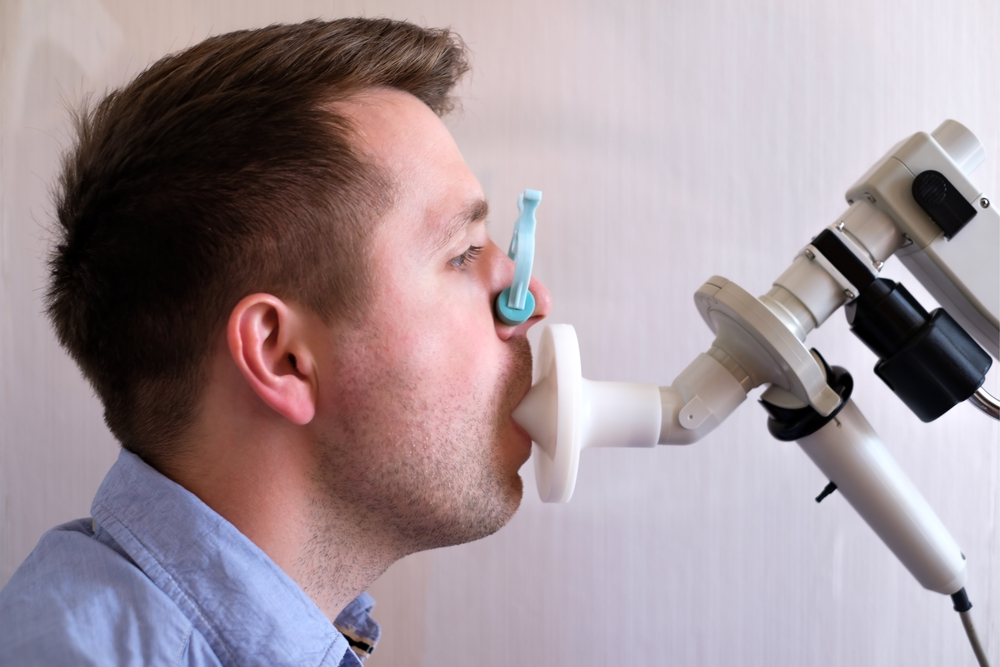Analyzing Exhaled Breath in Differing Positions May Be ‘Simple and Safe’ Way of Monitoring CTEPH

Analysis of gas exhaled in differing positions, like sitting or laying flat, could be a noninvasive and simple alternative to right heart catheterization in evaluating and managing people with chronic thromboembolic pulmonary hypertension (CTEPH), a study suggests.
The study, “Usefulness of ventilatory gas analysis for the non-invasive evaluation of the severity of chronic thromboembolic pulmonary hypertension,” was published in the International Journal of Cardiology.
Pulmonary hypertension (PH) is characterized by increased pulmonary arterial pressure (PAP) that can progressively contribute to right heart failure. CTEPH is a type of PH caused by pulmonary arteries obstructed by blood clots. This induces a localized increase in blood pressure in blood vessels of the lungs, and poorer oxygen levels systemwide.
Right heart catheterization is the gold standard for diagnosing and assessing PH progression. As an invasive approach, it carries small but well-defined risks and is considered burdensome for patients. Alternatives are needed for better care.
Researchers at Tohoku University, in Japan, evaluated if analysis of respiratory parameters taken in different body positions could help monitor progression in patients with CTEPH.
They enrolled 44 people newly diagnosed CTEPH, 33 whose CTEPH had improved with treatment (mean PAP lower than 25 mmHg), and 25 healthy volunteers. All participants underwent expired gas analysis performed in a seated or in supine position (lying flat on the back), as postural changes are known to impact ventilation patterns.
Ventilation parameters evaluated included the amount of carbon dioxide (CO2) in exhaled air, and partial pressure of CO2 detected at the end of an exhalation.
Results showed that the amount and pressure of exhaled CO2 decreased significantly with postural change in newly diagnosed CTEPH patients, while in the other two groups it increased. Importantly, lying down CO2 values were found to correlate with mean PAP (mPAP), commonly used to monitor CTEPH and PH progression.
Differences in CO2 noted between the two positions (lying or sitting) were also significantly lower among CTEPH-treated patients compared with healthy controls. These groups showed similar results on echocardiography (heart structure and activity), hemodynamics (blood flow patterns), and respiratory function tests.
Analysis of ventilatory gas parameter upon balloon pulmonary angioplasty (BPA) — a surgical procedure to open blood vessels and improve blood flow, and a standard of care for CTEPH patients – confirmed improvements in exhaled CO2 parameters while lying flat, which was accompanied by a significant reduction of mean PAP and heart rate.
“This study is the first to show that ventilatory gas analysis in different positions is useful for the evaluation of mPAP,” the researchers wrote.
Right heart catheterization “remains an essential tool for the diagnosis and assessment of PH,” they concluded. Yet, gas analysis with postural changes may represent a “simple, safe, and feasible” approach to use in clinical practice, and one that might lessen the frequency of catheterizations given to manage CTEPH.







